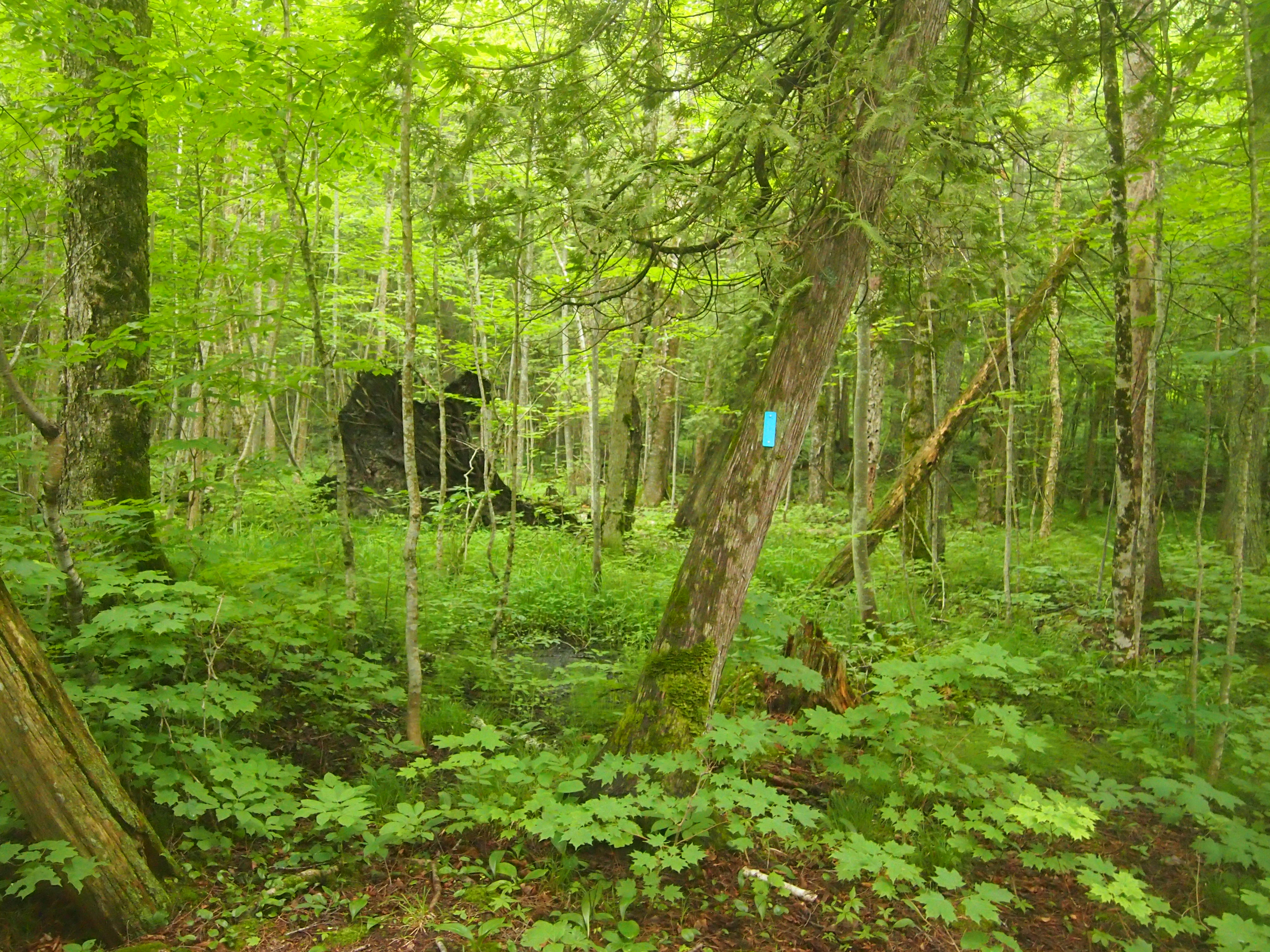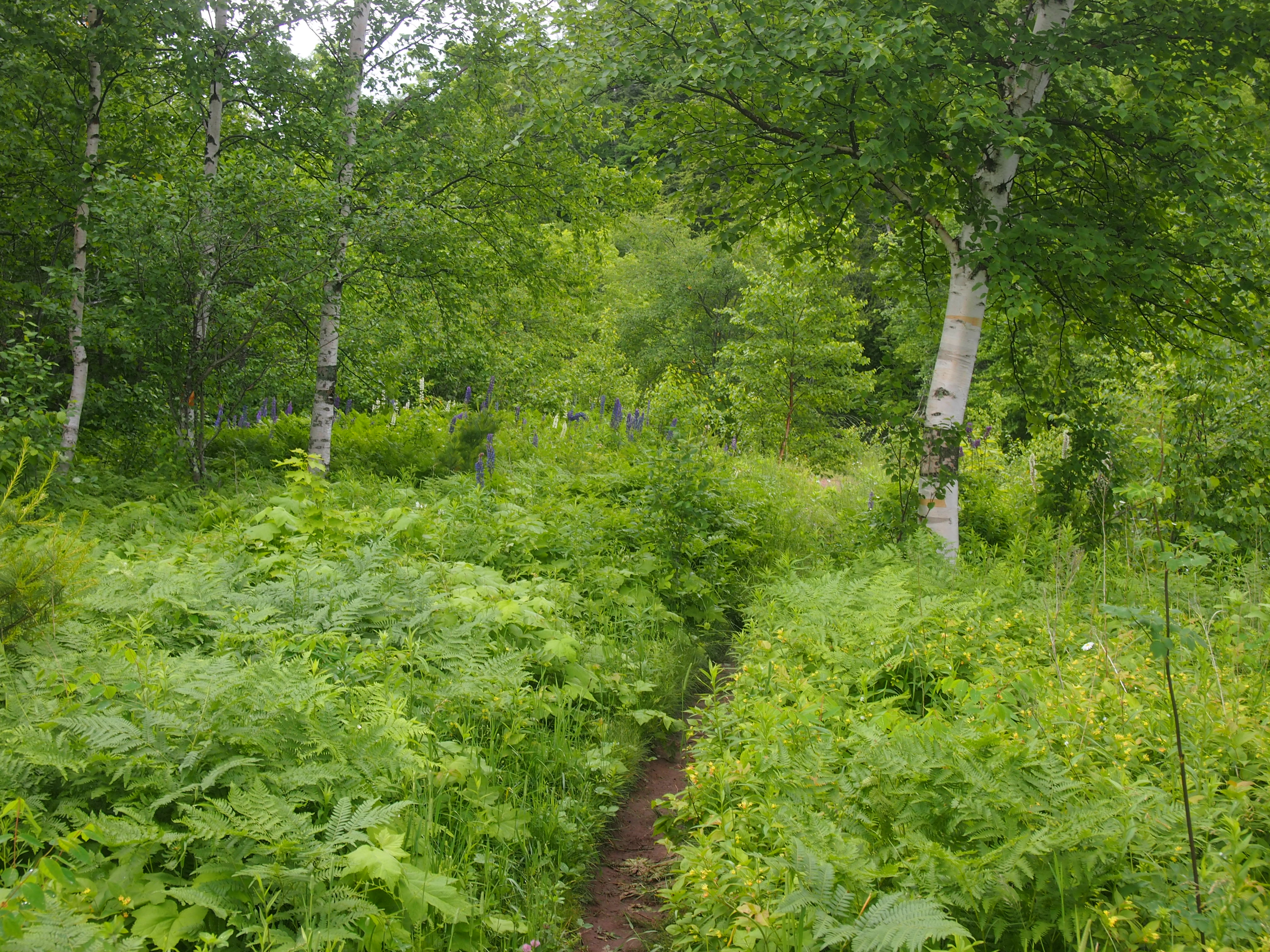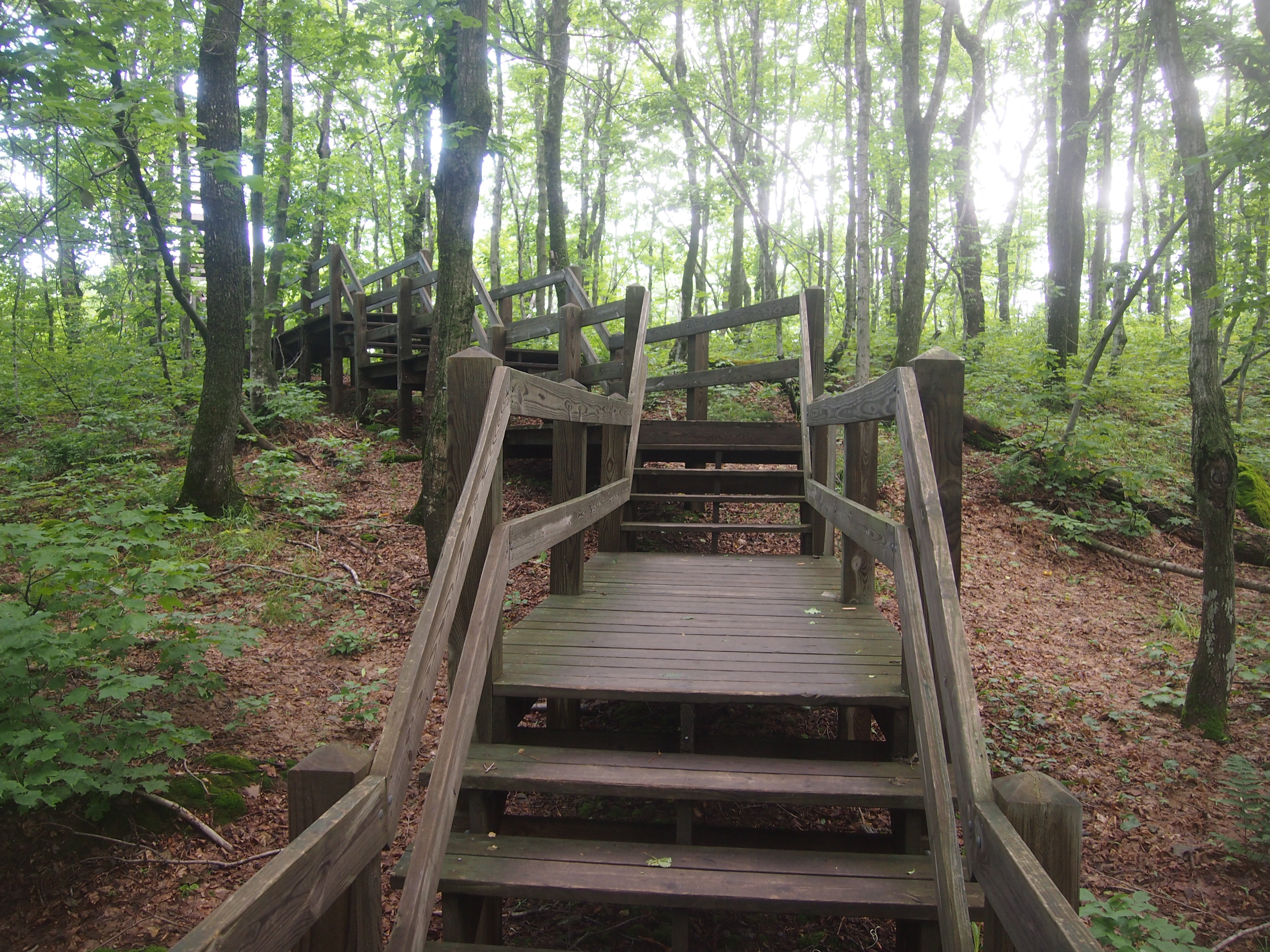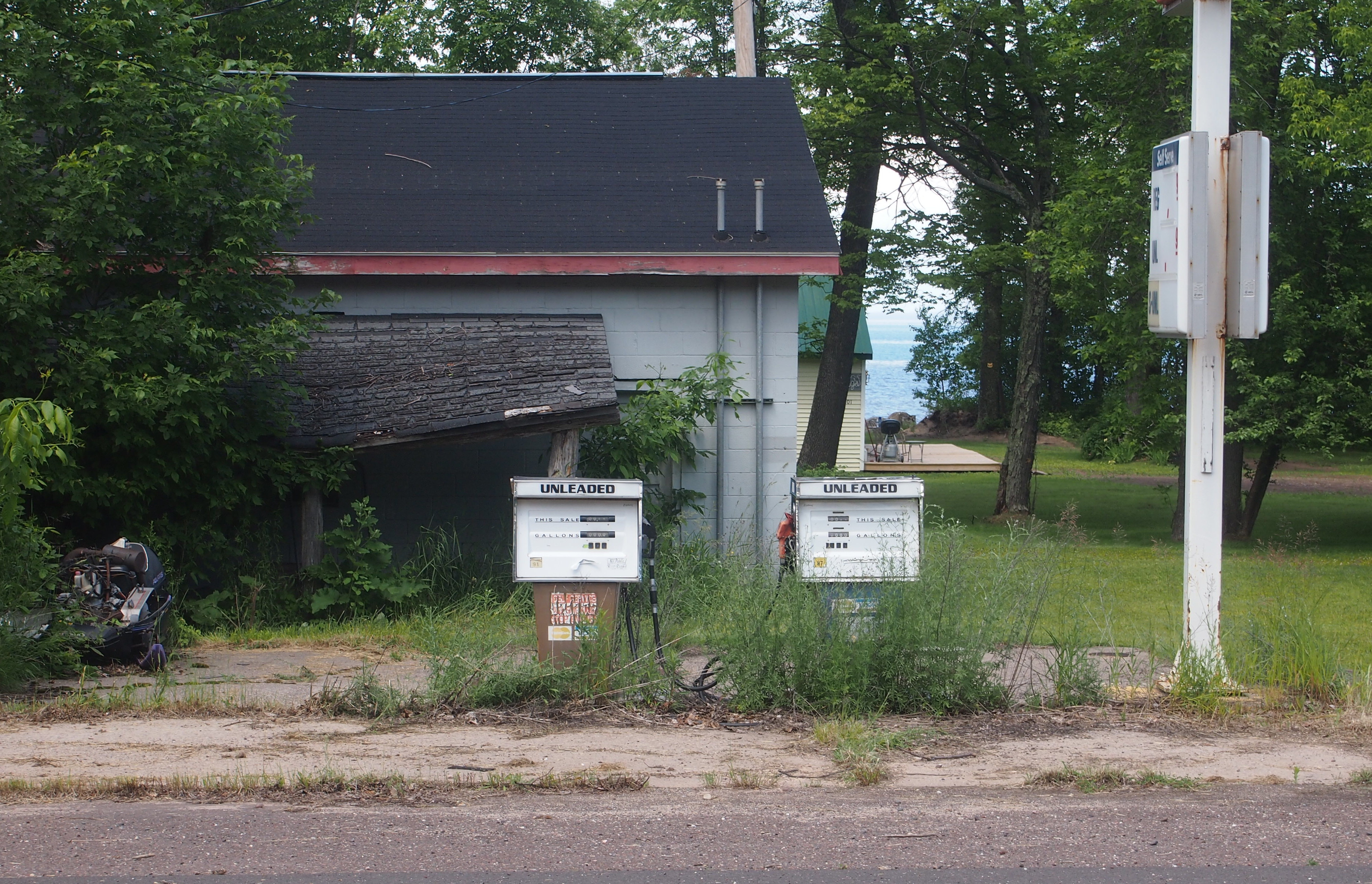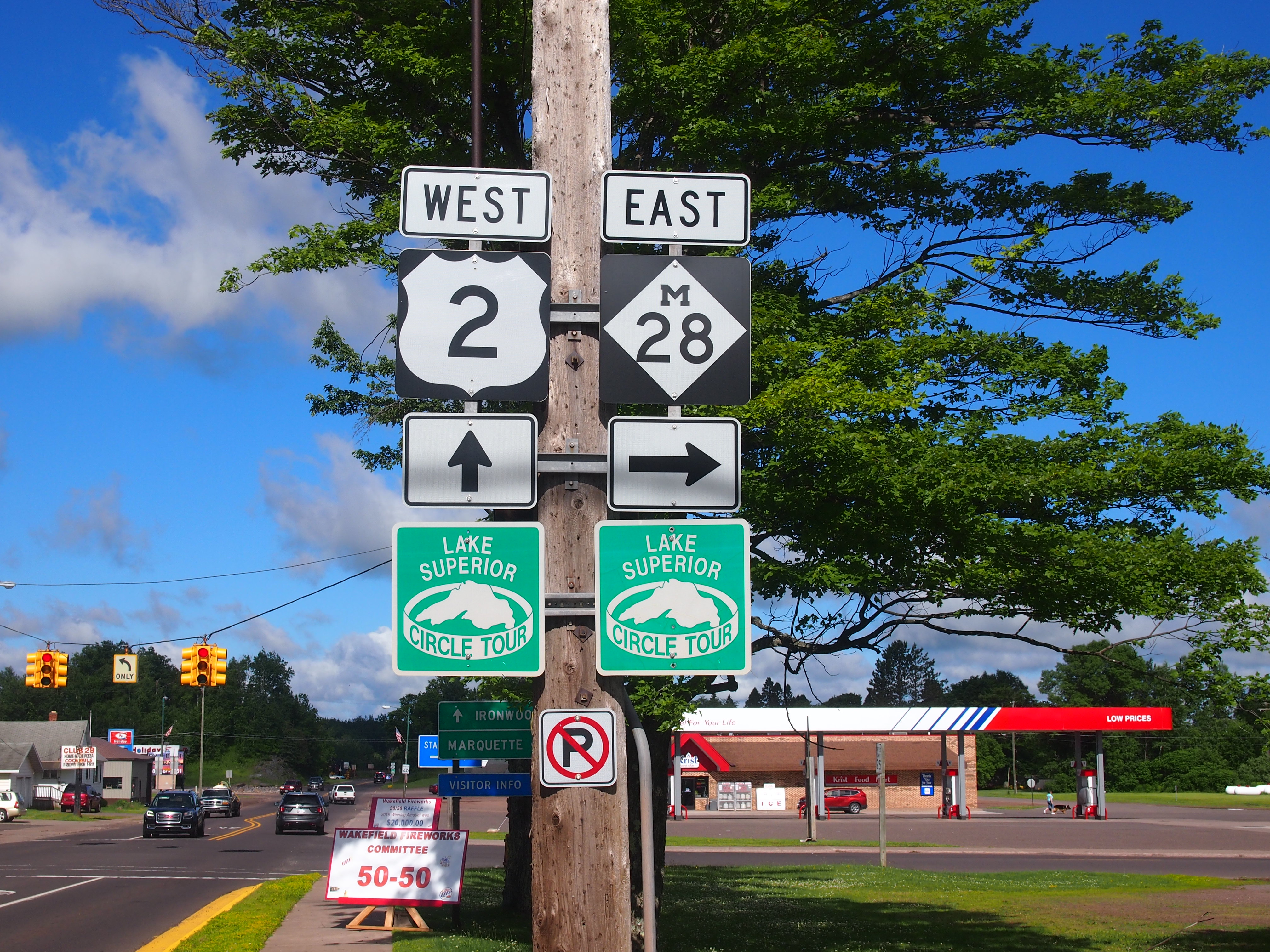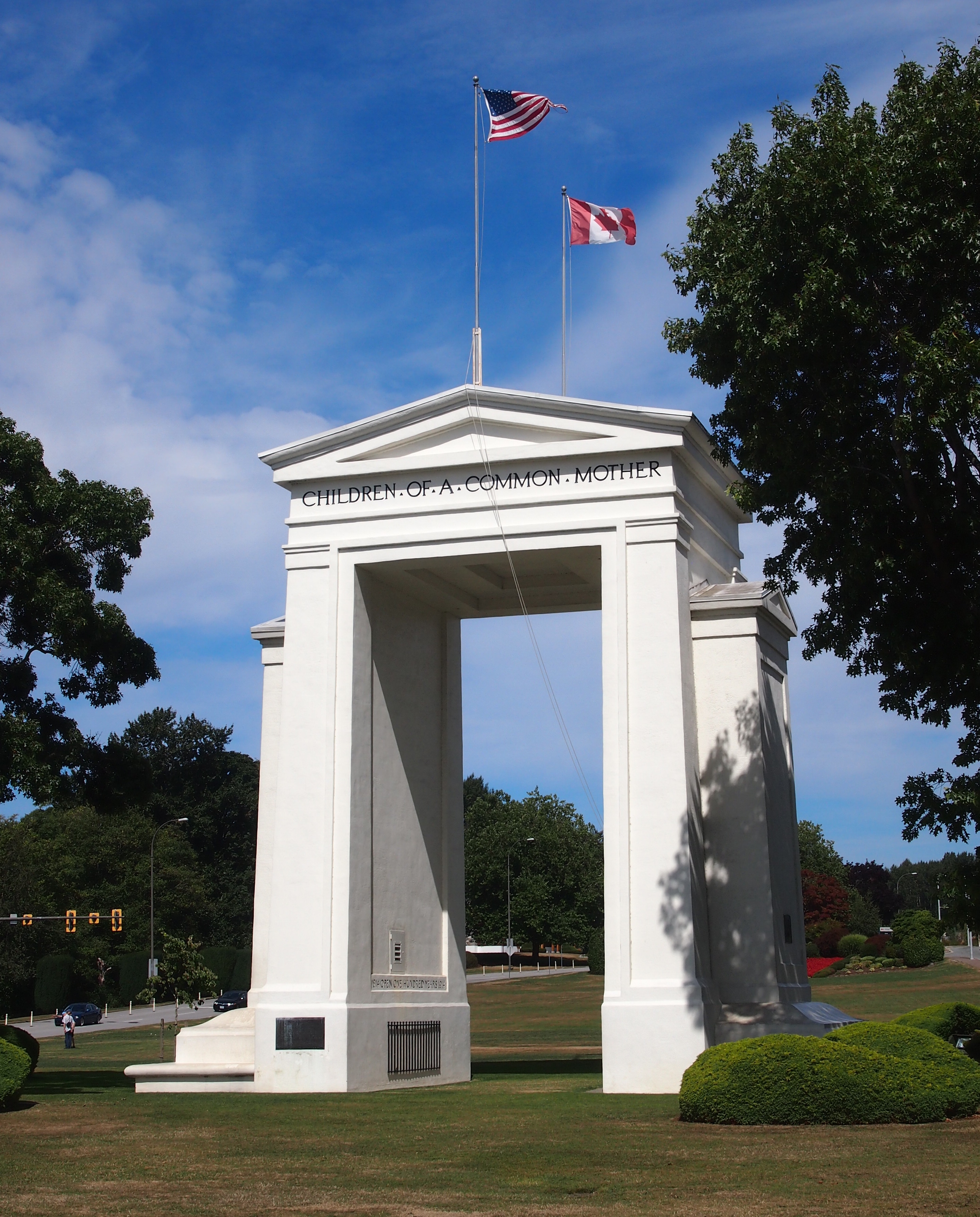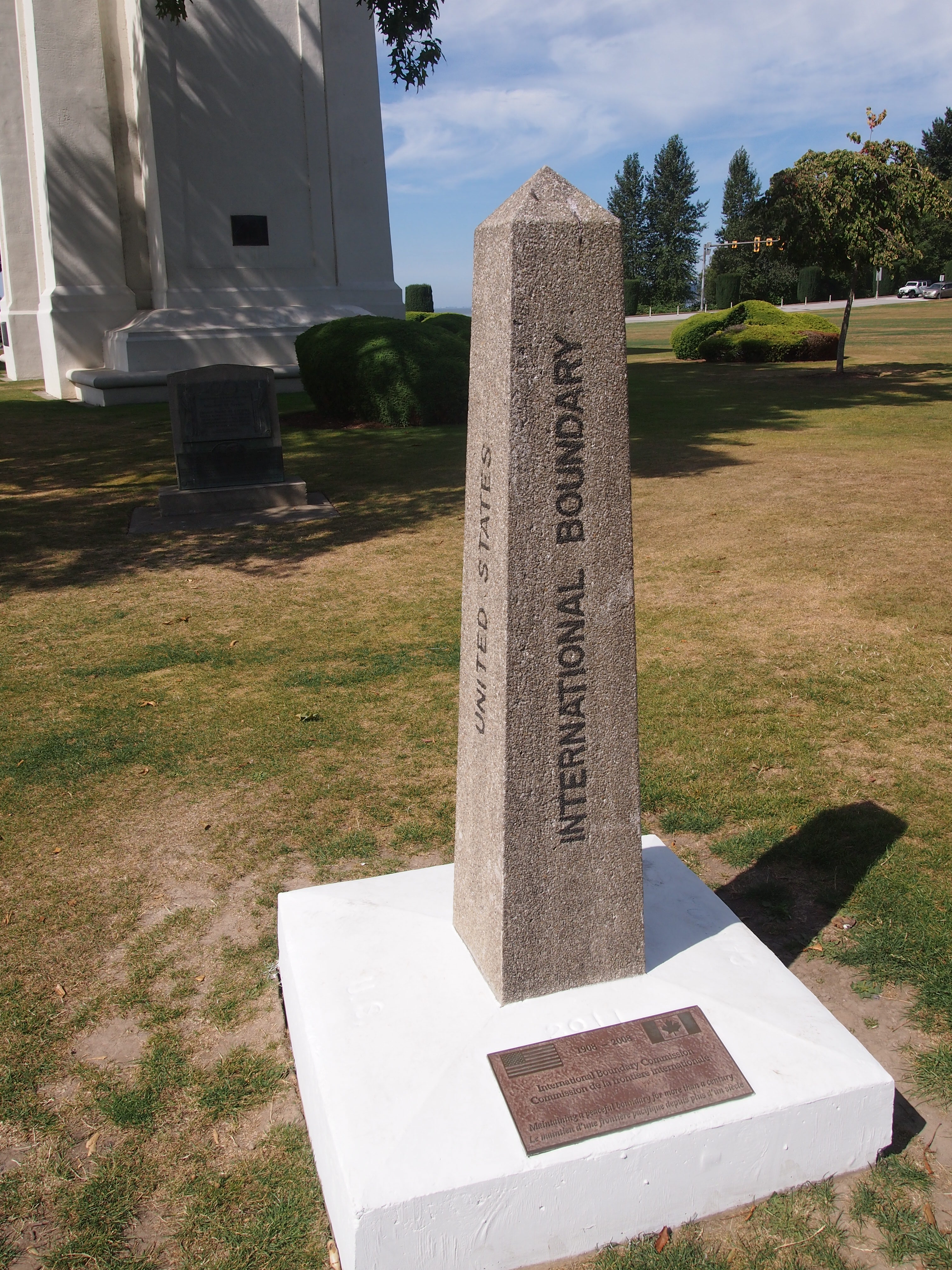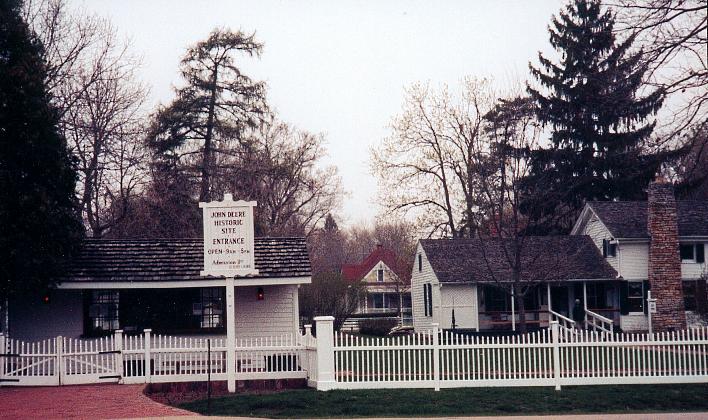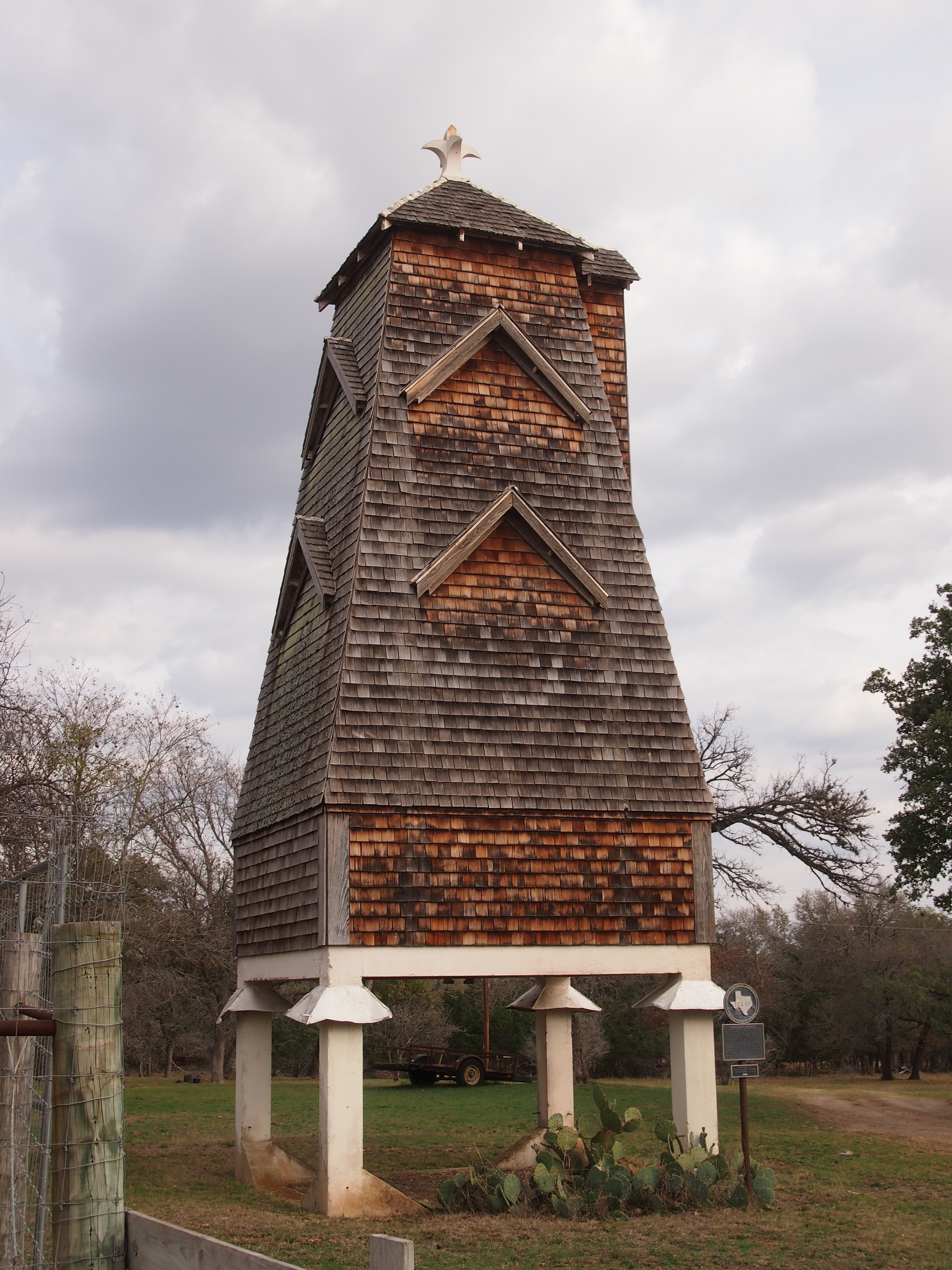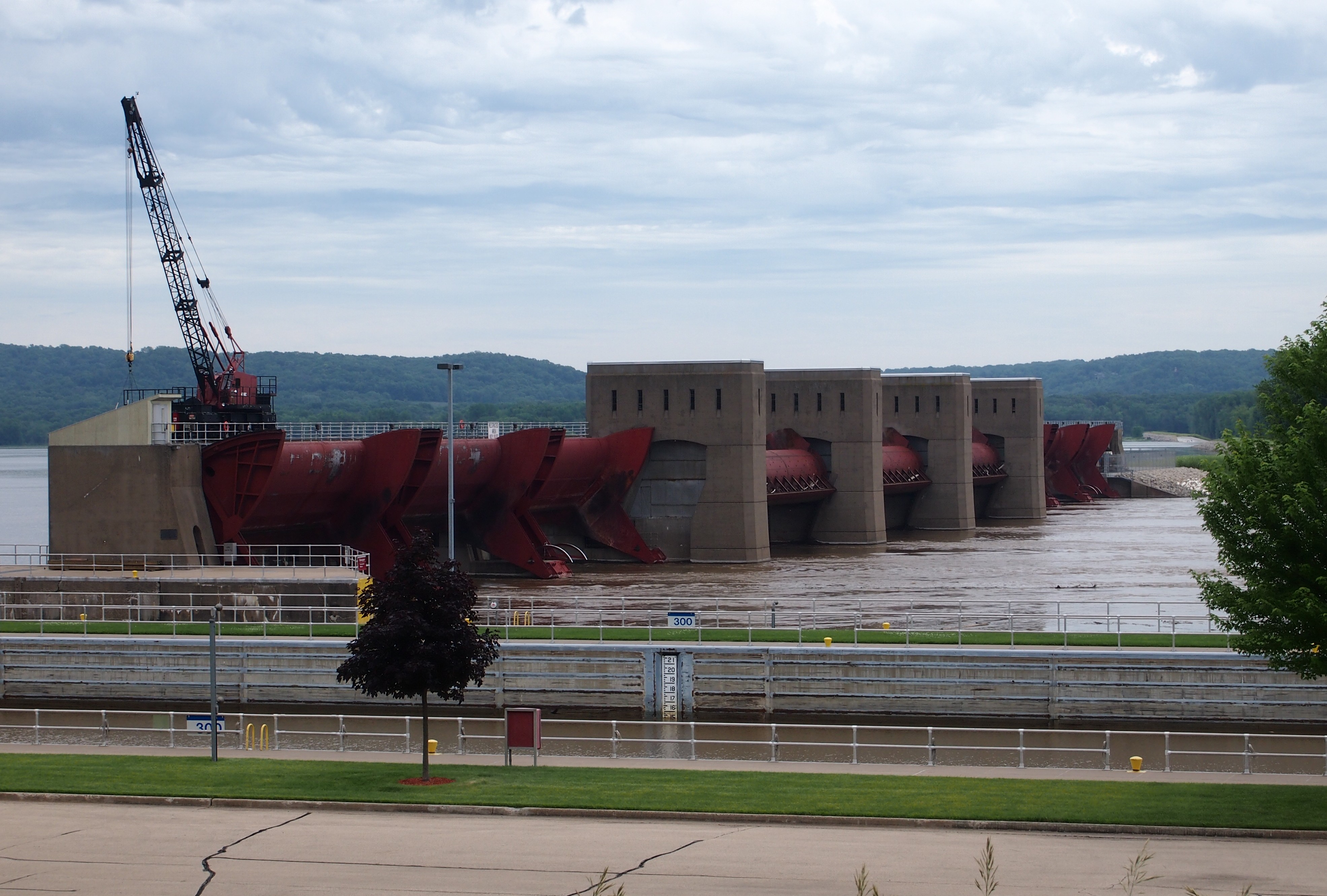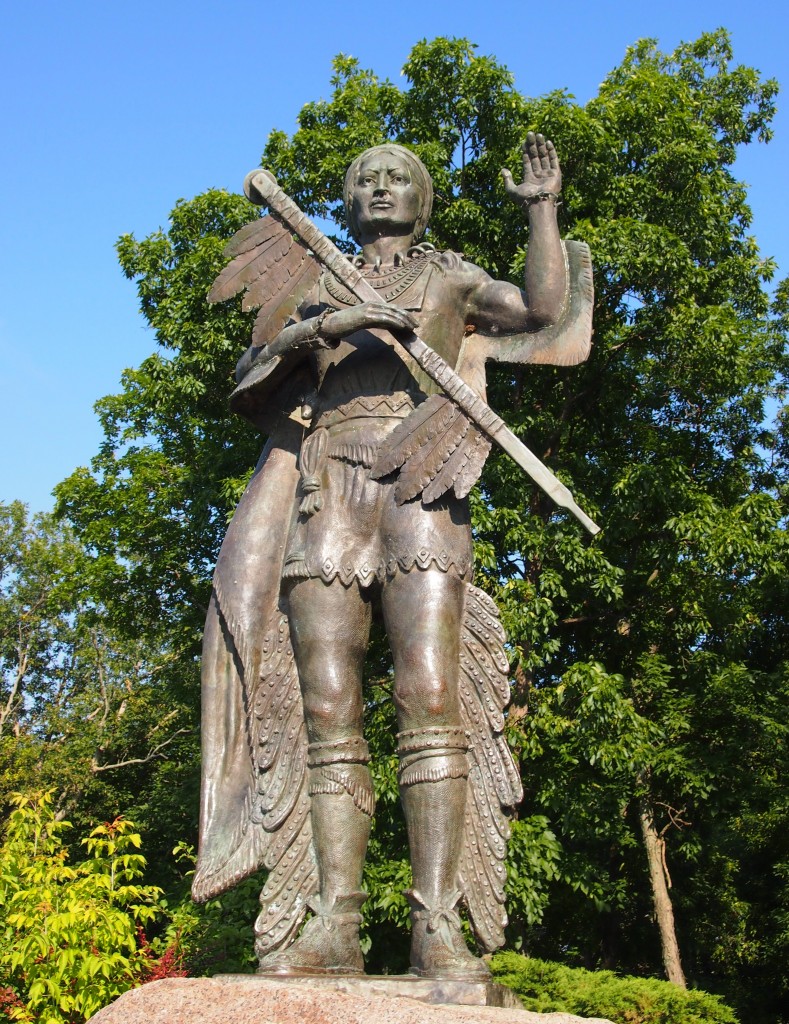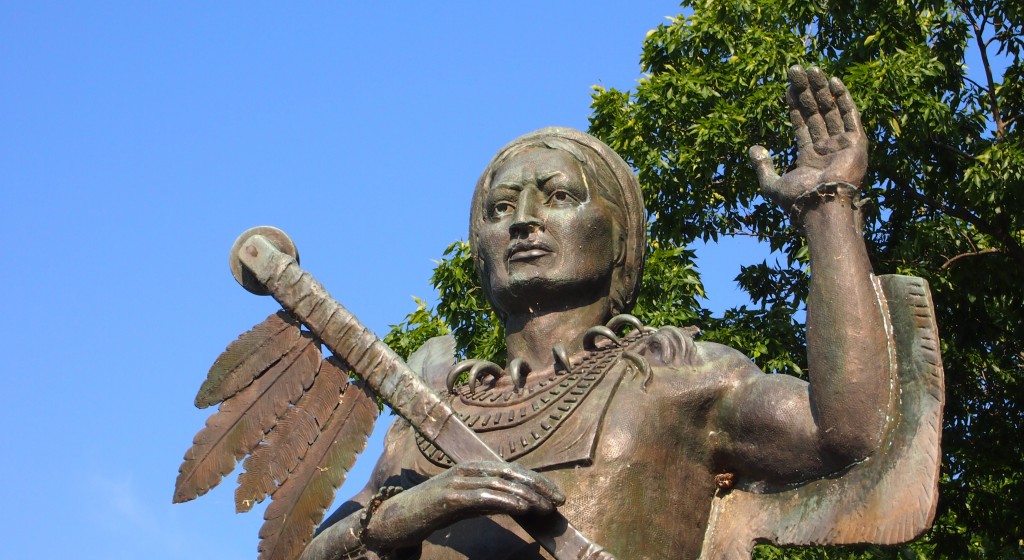What is it about vistas that people like? Assuming we can agree that vista refers to an aesthetically pleasing view from a high position. People drive distances, climb stairs, take elevators, pay money and sometimes even take risks for a good vista. I do those things, though the risks are never that great. I like a good vista, but I can’t quite say why.
That question triggers others. Did Petrarch really climb Ventoux for the view? Or is vista-awe actually a more recent invention, maybe a sprig of the Romantic movement or a Victorian fixation? These questions aren’t so burning that I’m going to do much research, but I do wonder. I suspect the feeling is fairly modern, and probably not universally shared even now, any more than a taste for coffee or soccer or rock and roll.
And it doesn’t just apply to views from mountains. Now that manmade towers are so plentiful, so are those vistas. At Porcupine Mountains Wilderness State Park in the UP on July 1, we enjoyed one vista of each kind: a tower top, though that was atop a high hill reached mostly by walking, and a view from a the bluff of a high hill, though we reached that mostly by driving.
The park has a lot of hiking trails through a lot of wilderness, about 59,000 acres with a Lake Superior coastline. The mountains of the name aren’t really much in the way of mountains, but it is rugged terrain: dense old-growth forests, never logged because of its inaccessible ruggedness. I read some years ago that the area was to have been a national park, but the federal government was too distracted in the early 1940s to get around to it, so the state of Michigan went ahead and created a state park in 1945.
I can’t pretend we did any serious hiking in the Porkies. The time and energy weren’t there. But we did some excellent short hikes. Off the South Boundary Road, a side road plunges into the park and ends at a parking lot for the Summit Peak Tower Trail. It’s only half a mile to a lookout tower atop a high hill.
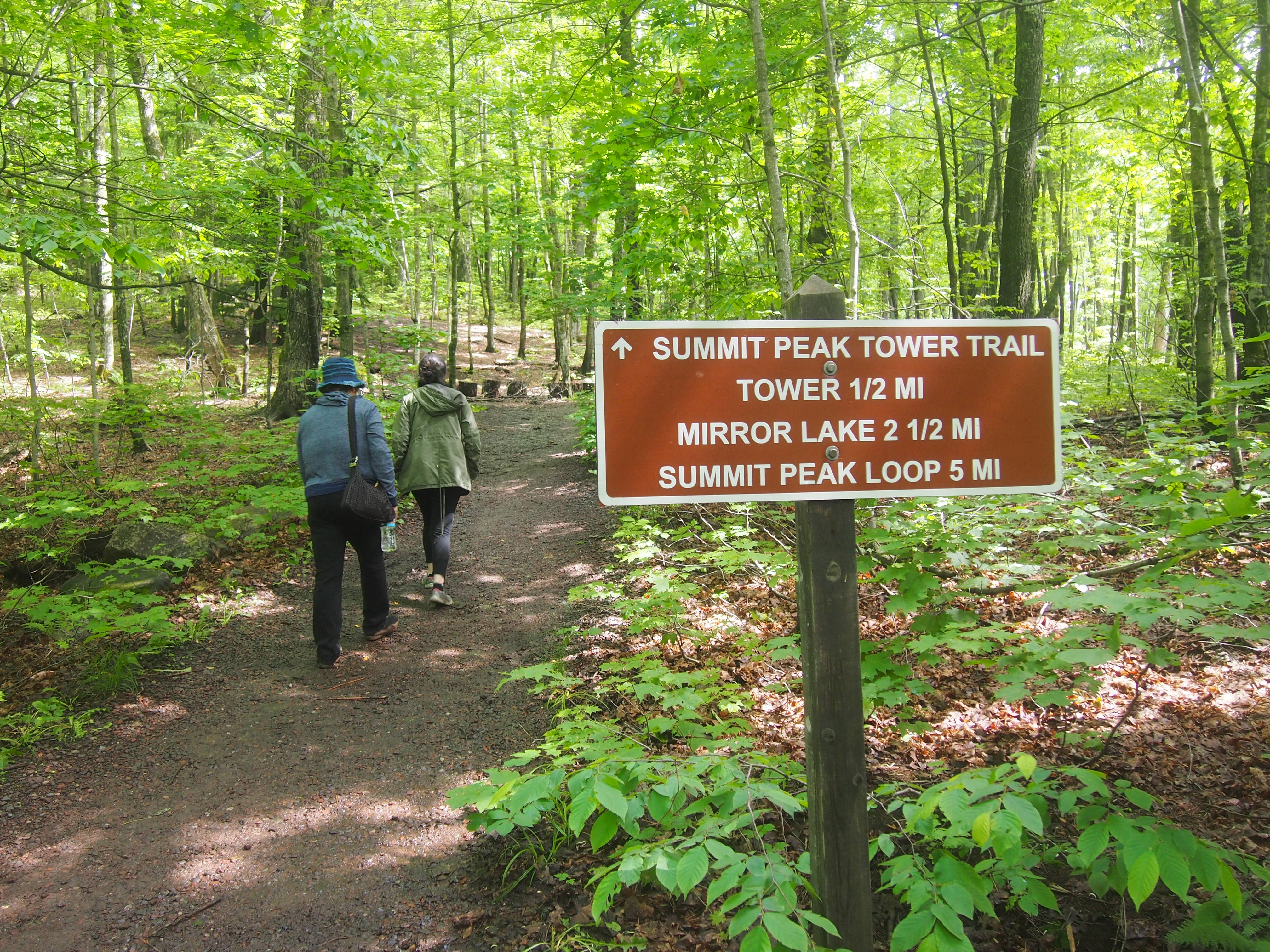 The trail rose gradually for a time. Except for muddy spots, no difficulties.
The trail rose gradually for a time. Except for muddy spots, no difficulties.
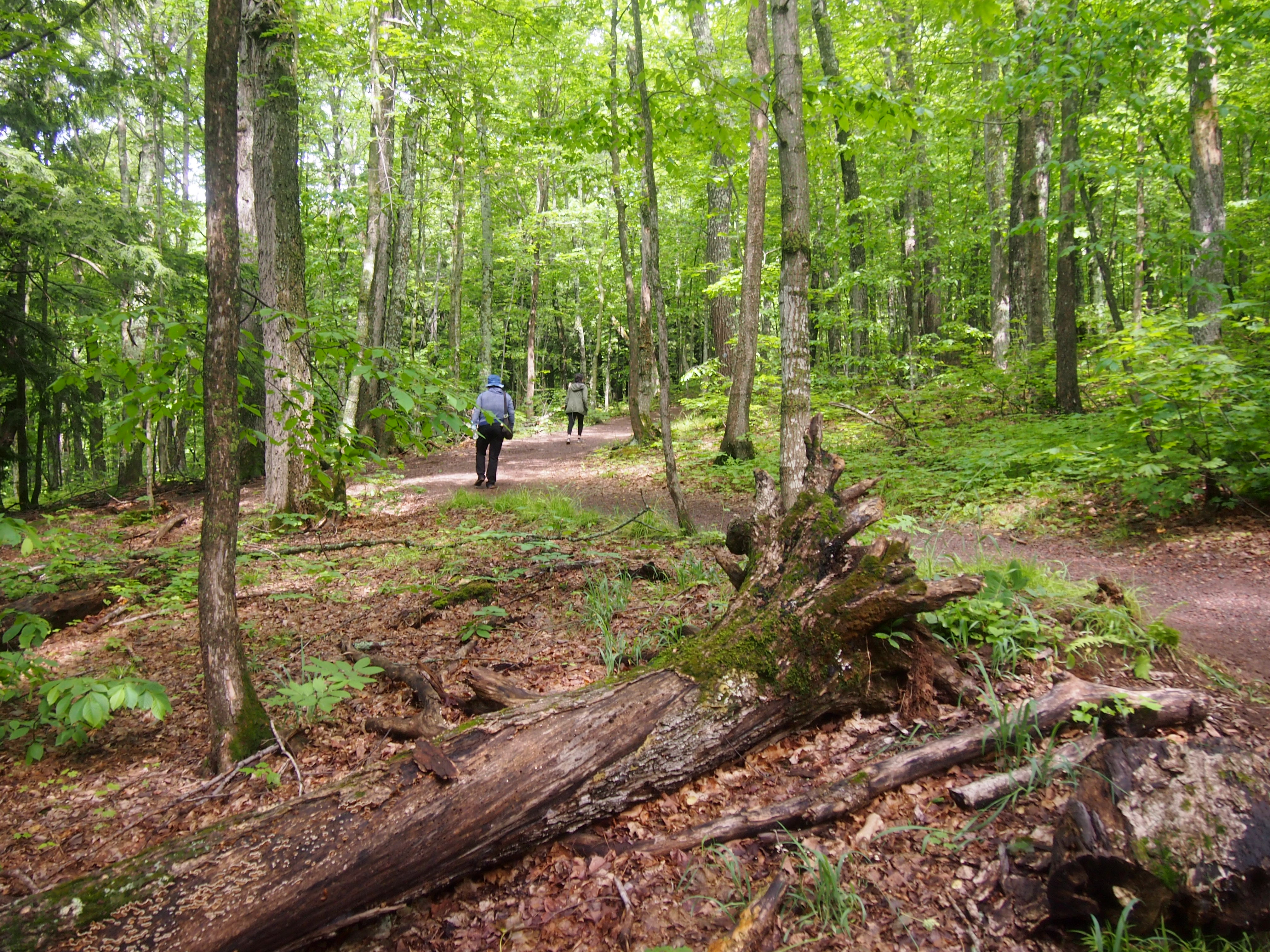 Eventually, the grade increased and sometimes there were boardwalks and steps.
Eventually, the grade increased and sometimes there were boardwalks and steps.
 I had to rest for a minute or two a number of times — and my family kept getting further ahead of me — but before long even I’d made it to the tower. A sign at the base warns: Keep Off During Thunderstorms. Well, yes.
I had to rest for a minute or two a number of times — and my family kept getting further ahead of me — but before long even I’d made it to the tower. A sign at the base warns: Keep Off During Thunderstorms. Well, yes.
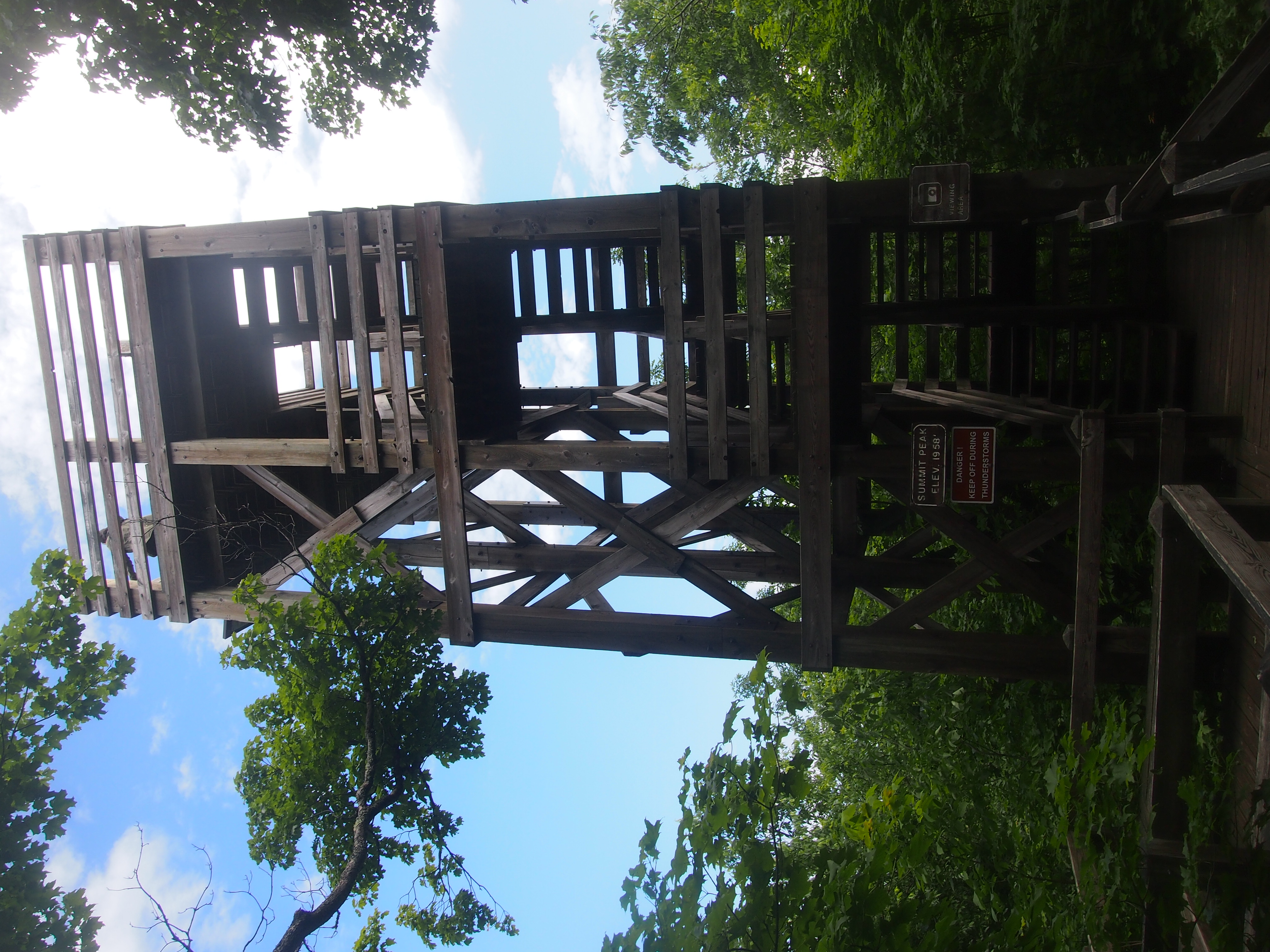 More steps to the vista we’d come to see. It was worth the effort, even if it’s romantic moonshine invented by the Romantic poets. I’m all in.
More steps to the vista we’d come to see. It was worth the effort, even if it’s romantic moonshine invented by the Romantic poets. I’m all in.
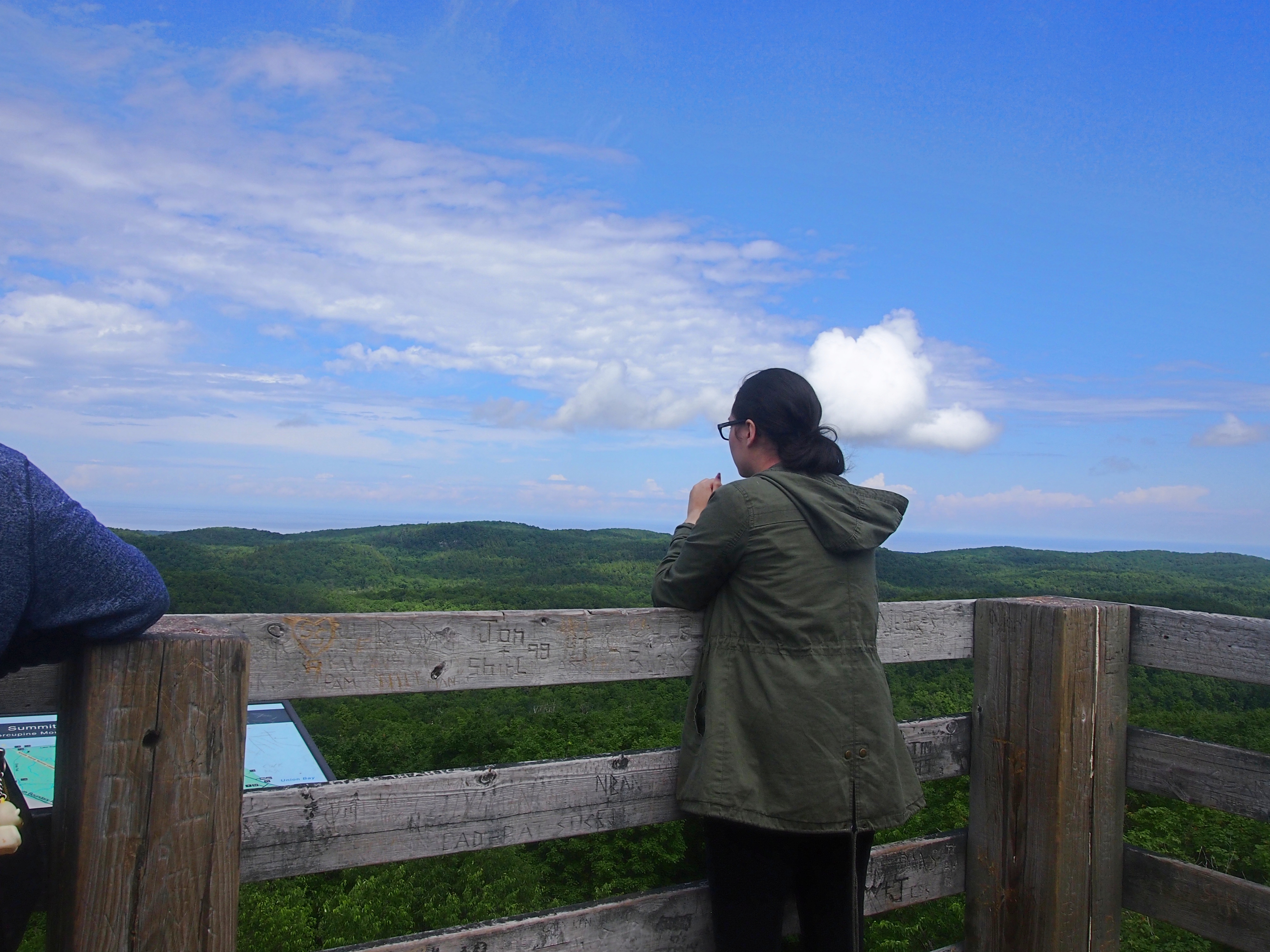
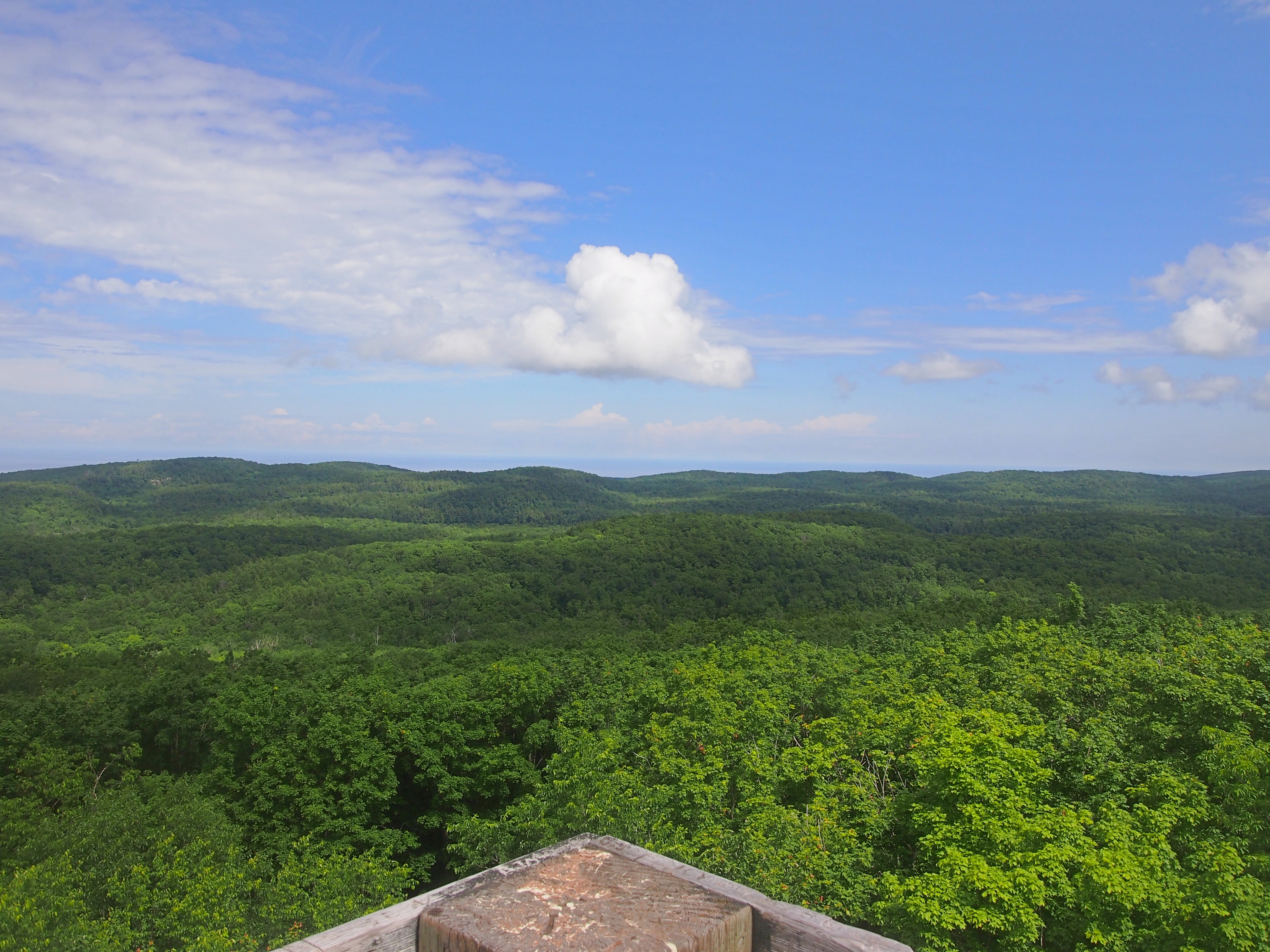 The other vista we decided to see is in the north end of the park, easily accessible by road: the Lake of the Clouds. A sign outside the park along M-107 pointed the way.
The other vista we decided to see is in the north end of the park, easily accessible by road: the Lake of the Clouds. A sign outside the park along M-107 pointed the way.
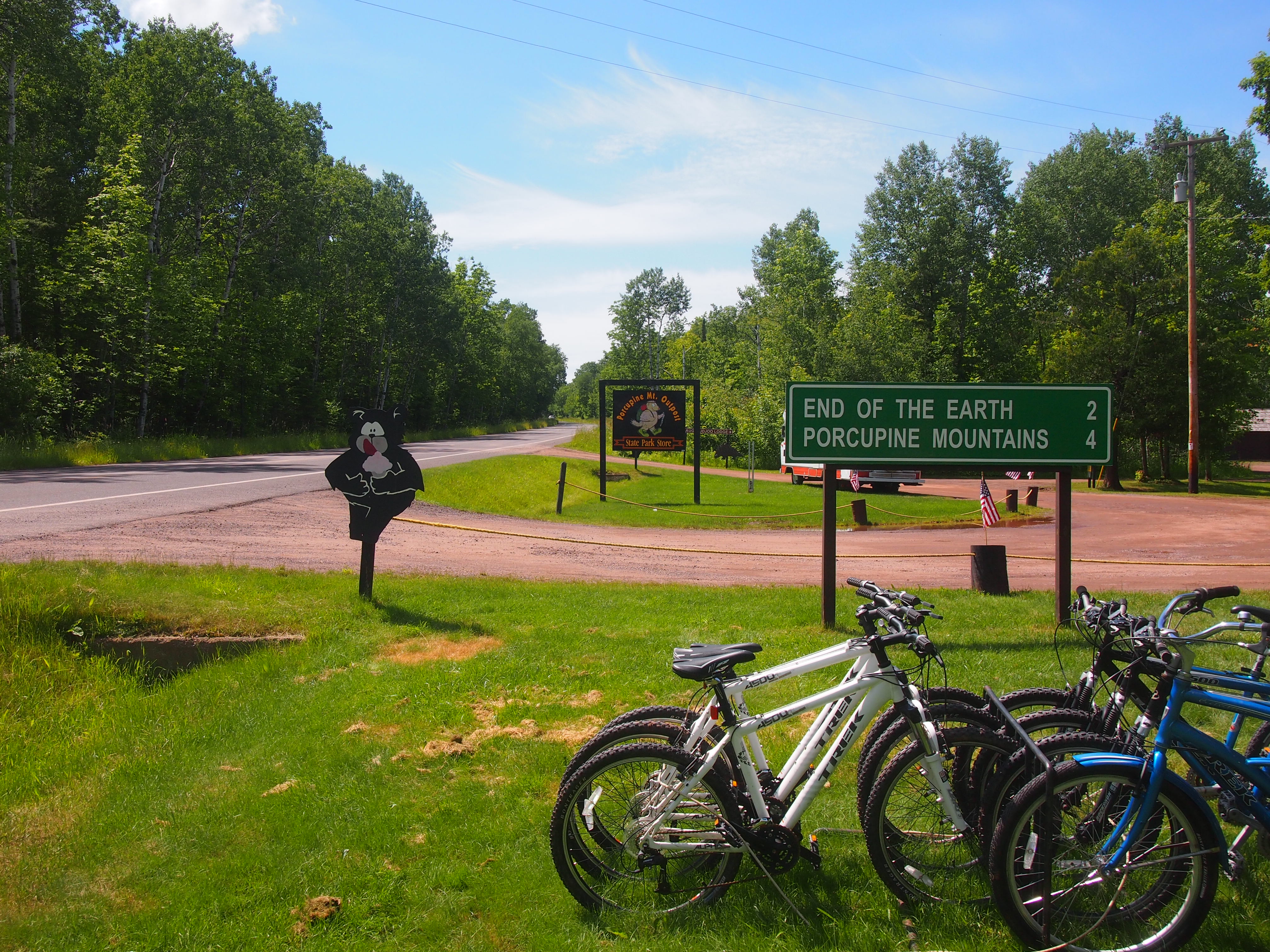 As for the End of the Earth, it didn’t look like anything special. Talk about anticlimactic.
As for the End of the Earth, it didn’t look like anything special. Talk about anticlimactic.
From the the Lake of the Clouds parking lot, a trail only a fifth of a mile leads to the first of two grand vistas.
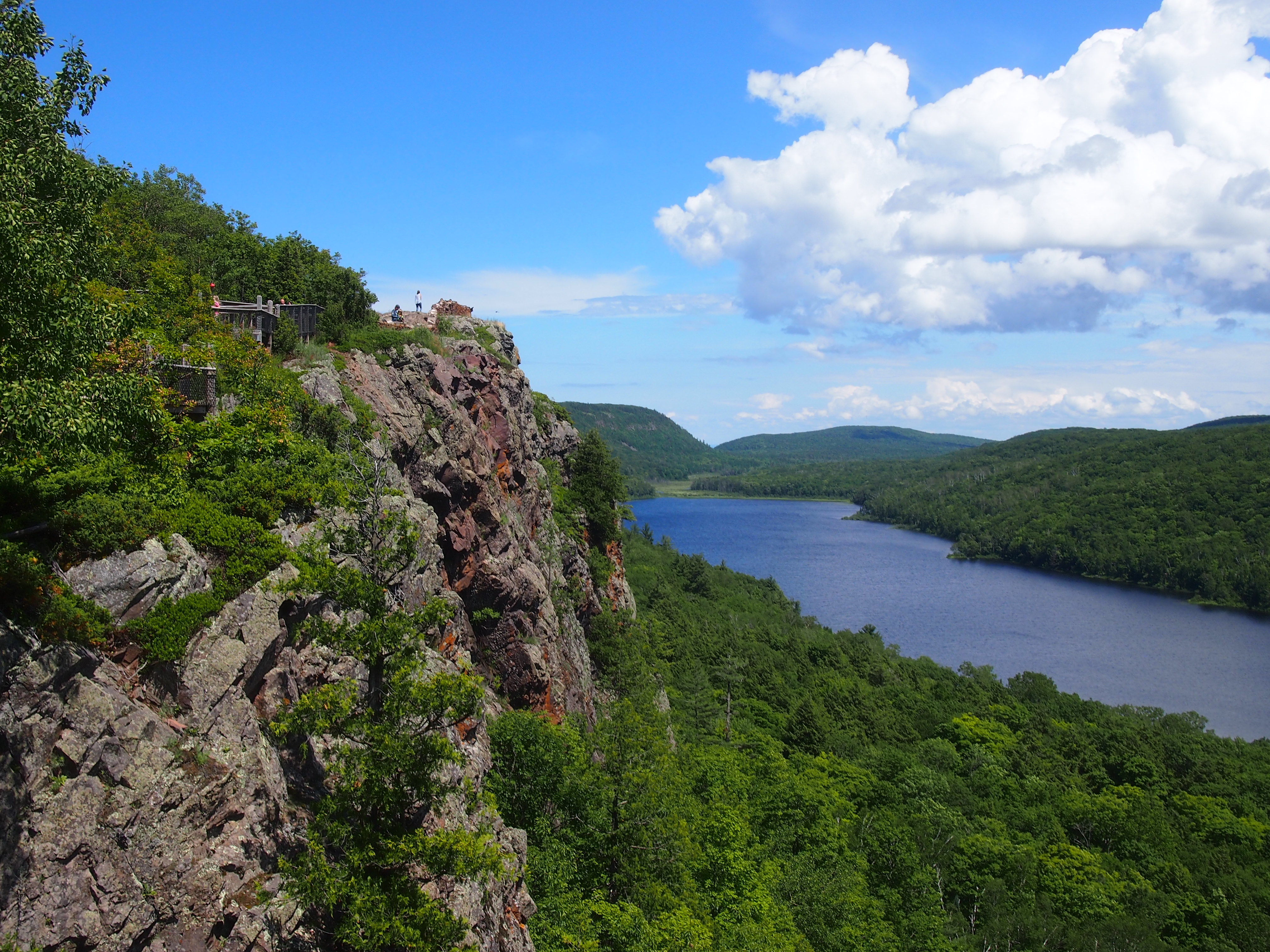 Note the people somewhat higher. The trail continues to that level, which is a rocky surface behind a short wall, overlooking for one of the fine vistas of the UP.
Note the people somewhat higher. The trail continues to that level, which is a rocky surface behind a short wall, overlooking for one of the fine vistas of the UP.
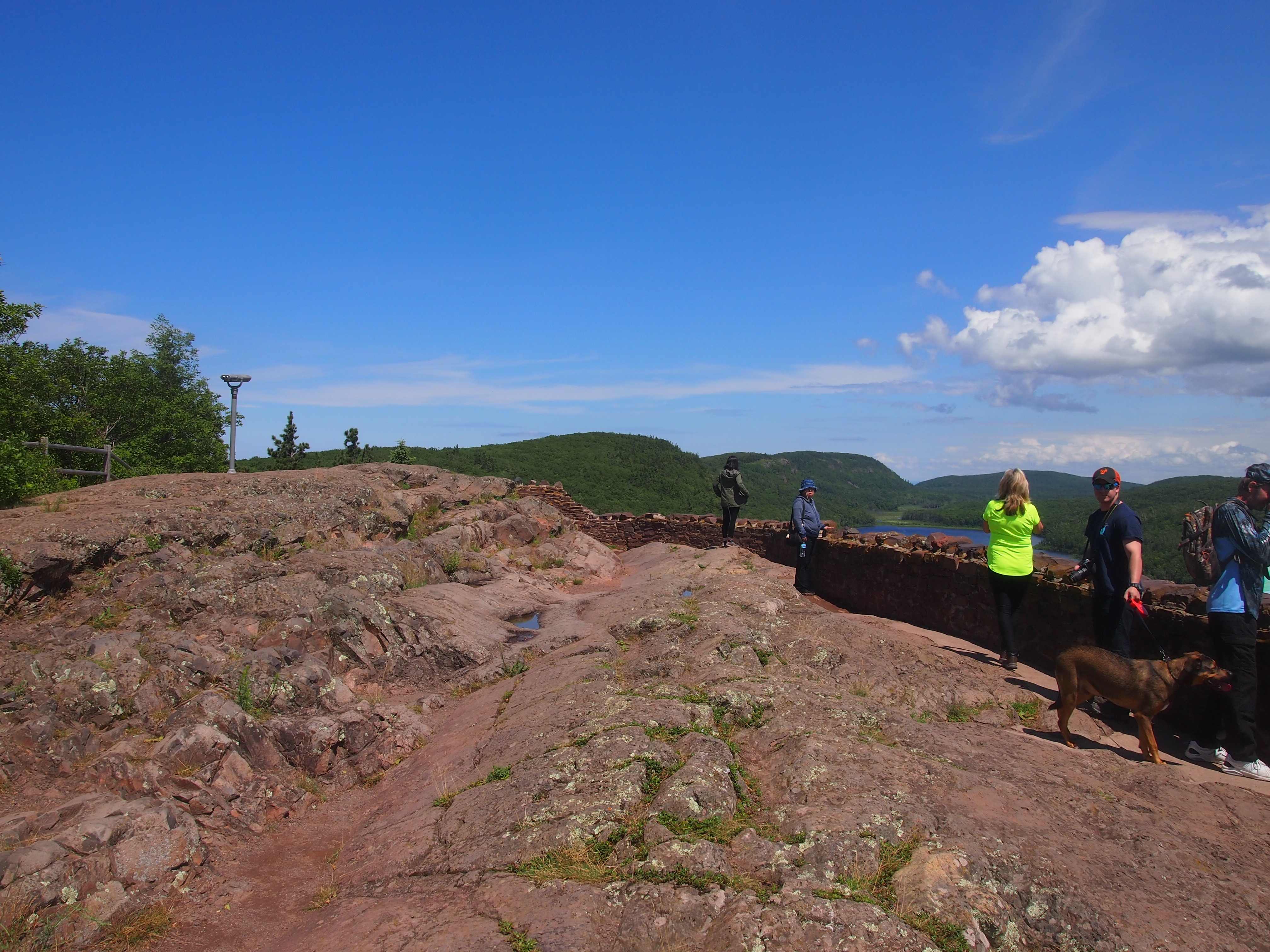
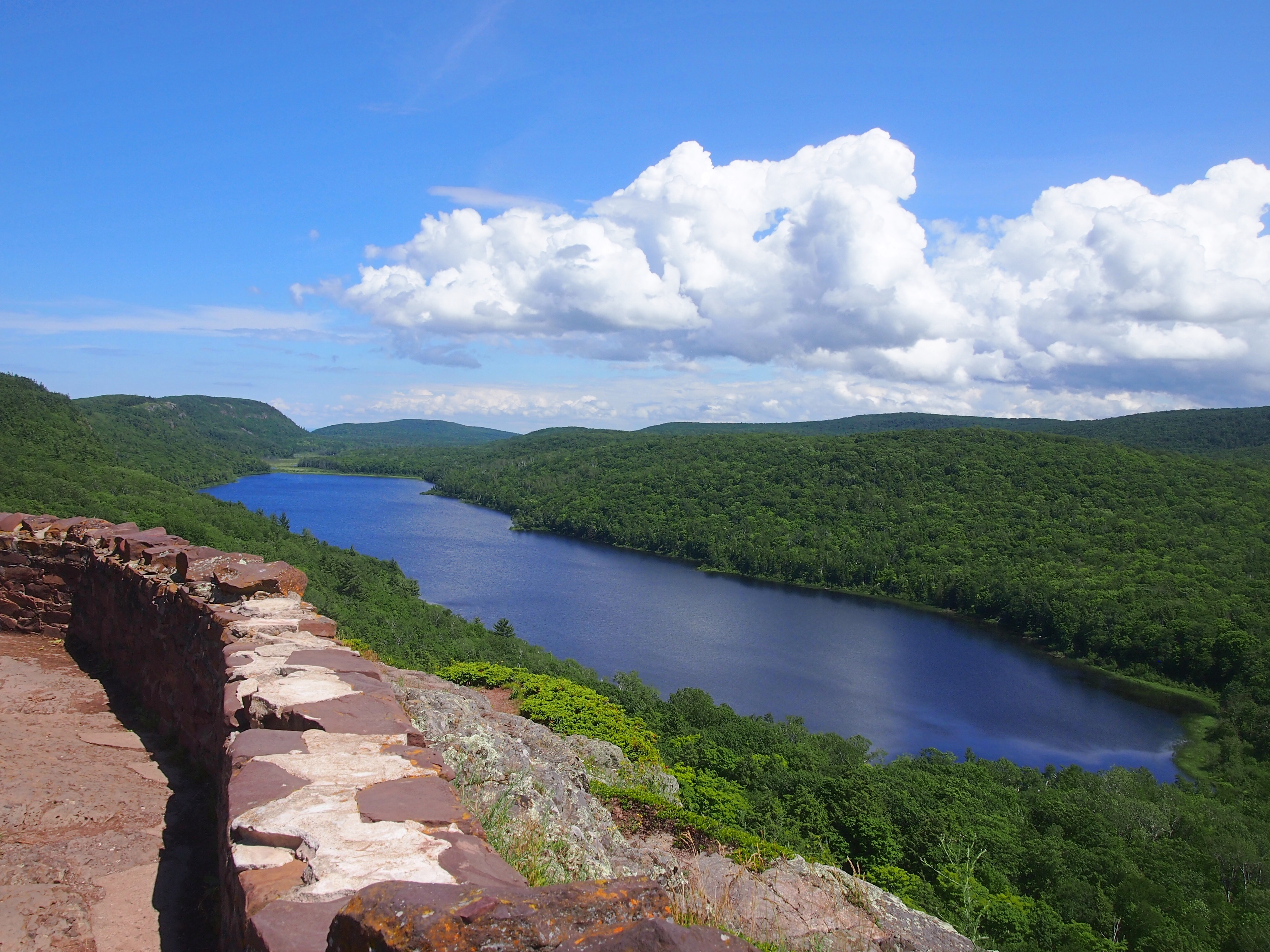 It’s a wow. The Lake of the Clouds view reminded me of some of the exceptional Canadian vistas we saw in ’06, though those were among mighty mountains, rather than picturesque hills.
It’s a wow. The Lake of the Clouds view reminded me of some of the exceptional Canadian vistas we saw in ’06, though those were among mighty mountains, rather than picturesque hills.
 Ann pointed out that in the fall, the view would be entirely different, and I think entirely worth the risk of running into early-season UP snow to see its multicolors.
Ann pointed out that in the fall, the view would be entirely different, and I think entirely worth the risk of running into early-season UP snow to see its multicolors.


